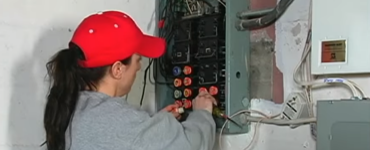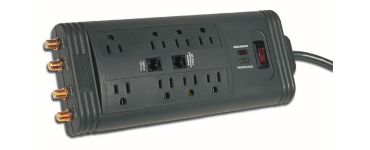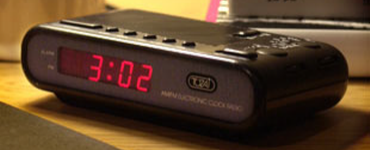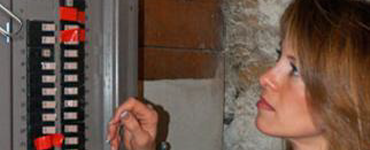Get to know your service panel
Your fuse box or circuit panel is the heart of your home's electrical system.
Take a few minutes to look at your home's fuse box or circuit panel (usually located in a metal box on an inside wall near the electric meter).
Each fuse or switch controls the electricity flowing through a specific area of your home. If too much electricity flows into a circuit, the fuse or breaker automatically creates a gap in the circuit to help prevent damage to the entire system.
But keep in mind that fuses and circuit breakers are designed to protect your home’s electrical wiring – NOT to prevent electrical shocks and injuries.
Make sure all breakers or fuses are labeled clearly so you know which circuits they control. If you're not sure, turn off the breakers or remove the fuses and have a helper find which outlets are affected. To reset a circuit breaker, turn off and unplug the lights and appliances you were using. Then flip the breaker switch "off" first, then back to "on." If you have push-button breakers, push it all the way in to reset.
Each fuse or switch controls the electricity flowing through a specific area of your home. If too much electricity flows into a circuit, the fuse or breaker automatically creates a gap in the circuit to help prevent damage to the entire system.
But keep in mind that fuses and circuit breakers are designed to protect your home’s electrical wiring – NOT to prevent electrical shocks and injuries.
Make sure all breakers or fuses are labeled clearly so you know which circuits they control. If you're not sure, turn off the breakers or remove the fuses and have a helper find which outlets are affected. To reset a circuit breaker, turn off and unplug the lights and appliances you were using. Then flip the breaker switch "off" first, then back to "on." If you have push-button breakers, push it all the way in to reset.
Frequent problems
A blown fuse or tripped breaker is a signal that something went wrong. The problem could be from outside your home, such as a power surge during a lightning storm, or it could be from inside, if too many devices were used in a single circuit or if the wiring was done incorrectly.
If you're experiencing any off these problems, call a certified electrician to inspect the entire system:
- Frequent tripped breakers or blown fuses
- Power "blinks" (momentary interruptions)
- Dimming or flickering lights
- Sizzling or buzzing noises
- Loose or damaged outlets
- Overheating of the circuit panel or any outlets or switches
Replacing a blown fuse
- Turn off the appliances and lights you were using.
- Turn off the main switch on the fuse box and check to see which one has blown.
- Be sure the replacement fuse is the proper size; using a fuse that's too large for the circuit can cause an electrical fire.
- Never substitute an object, such as a coin or a paper clip for a fuse.
- If it's dark, use a flashlight - not a candle.
More from this category
Updating electrical wiring
Yesterday's wiring seldom meets today's electrical needs. Learn what it takes to install modern wiring in an older home.
Power quality 101
Surge protectors
Not all power strips protect against surges. Know what to look for to get your money's worth.






